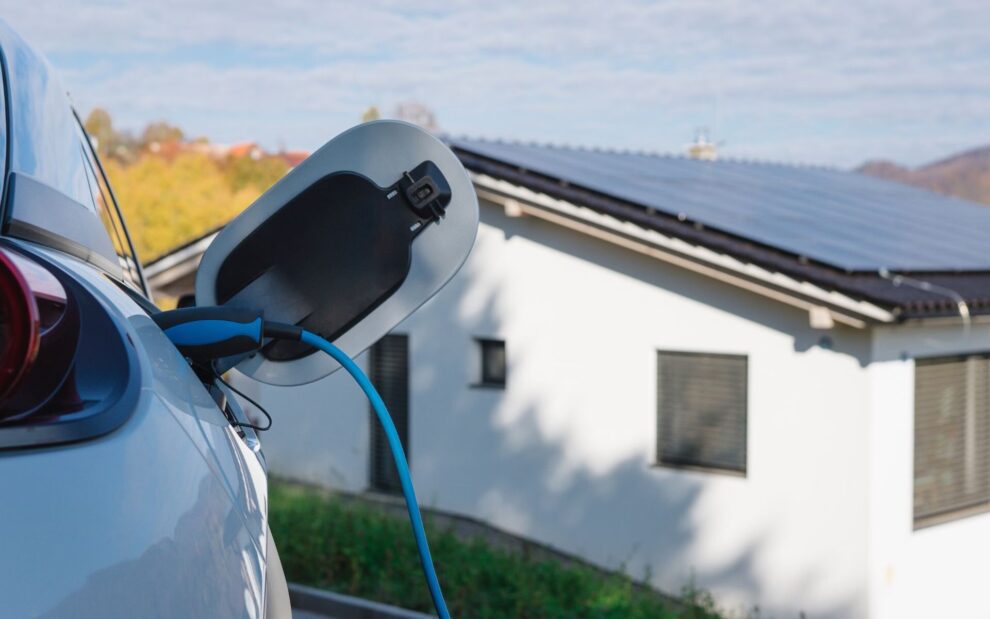Sales of electric cars are climbing every month, and that momentum feeds a second boom few people notice at first: the race to build chargers. Grand View Research projects the global EV-charging-infrastructure market will grow at 25.5 percent per year from 2025 to 2030—one of the fastest compound rates in any construction segment. The International Energy Agency’s Global EV Outlook 2025 echoes the trend, noting that more than 1.3 million public charge points were added in 2024 alone. With each new socket comes a practical question: who wires it, tests it, and keeps it safe?
For working electricians, that demand is a career opportunity hiding in plain sight. A concise electrician course focused on EV-charging installations gives you the proof clients now ask for, while still letting you earn during the week.
Why chargers need specialist skills
EV hardware looks simple—just a pedestal and a cable—yet the electrical design behind it is anything but:
- Load calculation:single outlets can draw 7 kW, three-phase units 22 kW or more. Get the maths wrong and breakers nuisance-trip.
- PEN-fault protection:metal-bodied chargers on PME supplies need extra devices to guard against dangerous voltages.
- Smart-network commissioning:chargers must speak OCPP or API variants so fleet operators can bill energy accurately.
- Future firmware:installers must leave headroom for updates that add features such as vehicle-to-grid export.
The latest City & Guilds 2921-34 syllabus addresses each item, but only if you train on equipment that mirrors real sites. Elec Training rigs include single and three-phase chargers, CT clamps, and software dashboards so learners practise every step, not just cable glanding.
From first fix to signed certificate: a skills checklist
| Stage | Critical actions | Course coverage |
| Design | Calculate spare capacity, choose earthing option, check DNO consent | Diversity factors, PME work-arounds, application paperwork |
| Installation | Mount enclosures, route SWA or EV-Ultra, torque terminals | Mechanical fixing, conductor prep, cable schedules |
| Testing | Insulation, earth-fault loop, RDC-DD functional check | Safe isolation refresh, test-instrument sequences |
| Commission | Register charger on network, set load-share, issue handover pack | OCPP setup, QR-code pairing, client forms |
Leaving any box unticked creates callbacks later and erodes profit, so structured training is worth the seat fee.
Building on a solid base: why the nvq level 3 electrical still matters
Main contractors, insurers, and some distribution-network operators will not accept EV-charger sign-offs unless the installer also holds an NVQ Level 3 or equivalent. The portfolio proves you can design circuits, follow safe-isolation, and issue certificates without supervision. Many learners fold live charger installs straight into their evidence log—photos of PEN-fault devices, load calculations, and final Zs readings count toward multiple NVQ units and shorten the assessment window.
Choosing the right upskilling path
- Two-day boot camp:ideal for time-served electricians who need a quick update on PEN-fault and smart protocols.
- Blended theory plus one practical day:online sessions cover design paperwork, on-site workshop drills the testing routine.
- Full 2921-34 package:adds large-scale design content for installers who plan to bid on public car parks or depot projects.
Elec Training schedules cohorts monthly so you can slot learning between site phases rather than surrender three weeks straight.
Funding and business upside
Local green-skills grants often cover part of the tuition, and asset-finance providers let fleets roll training into charger-purchase contracts. Many small firms recoup course fees within one quarter through higher day rates or by keeping verification work in-house. These numbers is clear: one missed test trip costs more than the course that would have prevented it.
Five habits for reliable charger installs
- Check DNO approval before ordering hardware.
- Scan every torque setting into the handover pack, clients love proof.
- Update charger firmware during commissioning, not six months later.
- Store PEN-fault-device serial numbers; warranty claims are faster.
- Plan yearly CPD so Regulation changes do not catch you out.
Ready to lead the charge?
Book a discovery call with Elec Training. We will match the electrician course to your current licence, outline funding routes, and reserve a practical-rig slot. The EV market is sprinting, and early movers win the best projects—start before competitors plug in.











